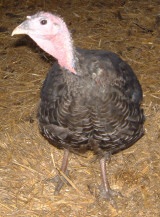Danes Focus on Camplobacter Prevention
DENMARK - Campylobacter is the most common bacterial cause of human gastrointestinal disease in Denmark. It is estimated that imported chilled broiler meat contributed to approximately 80% of the human campylobacteriosis cases related to consumption of chicken meat in Denmark in 2006. Importers must, therefore, become better at demanding a reduction in the levels of campylobacter bacteria in imported chicken meat.
 |
| Danes demand greater control efforts. |
This is one of the initiative areas in the Ministry of Food, Agriculture and Fisheries’ new five-year action plan for fighting campylobacter bacteria.
”Danish chicken farmers have become extremely good at controlling campylobacter in their production. However, the number of Danes getting ill is still alarmingly high. Therefore, it is necessary that we sharpen the requirements we place on importers of chicken meat. Consumers have a right to safe food products – from Denmark or from abroad. Therefore, I will now work towards reaching an agreement with importers and retailers for them to place higher demands on the meat they sell,” says Minister for Food, Agriculture and Fisheries Eva Kjer Hansen.
The Minister has already begun work on the problem concerning imports through the launch of intensified monitoring of both Danish and imported meat – the so-called”case-by-case” control. In 2008 the numbers of tests of imported chicken meat are to be additionally increased.
Since 2003 Denmark has had a voluntary strategy for fighting campylobacter. The results of this strategy have been positive. There is now less campylobacter in the Danish chicken we consume today. There has also been an approximately 30 per cent reduction in the number of people falling ill from 2001 to 2006, but there was an increase in this number last year.
”With the new efforts aimed at fighting campylobacter, we have established some specific initiative areas so that we can reduce the number of people getting sick,” says Eva Kjer Hansen.
The Danish Veterinary and Food Administration, in cooperation with the industry and experts at the Technical University of Denmark, have assisted the Ministry in drafting a new Danish action plan for fighting campylobacter. The plan is now being discussed among the political parties’ spokesmen.
The plan stretches over five years and establishes a number of areas in which efforts must be made to reduce the incidence of campylobacter even more. Apart from increasing initiatives on the import side, the plan includes, among other things, insect screens in broiler houses, better methods of allocating meat from Campylobacter positive flocks to the production of frozen products, as well as the use of steam and ultra-sound in order to reduce the bacteria incidence.
Further Reading
















